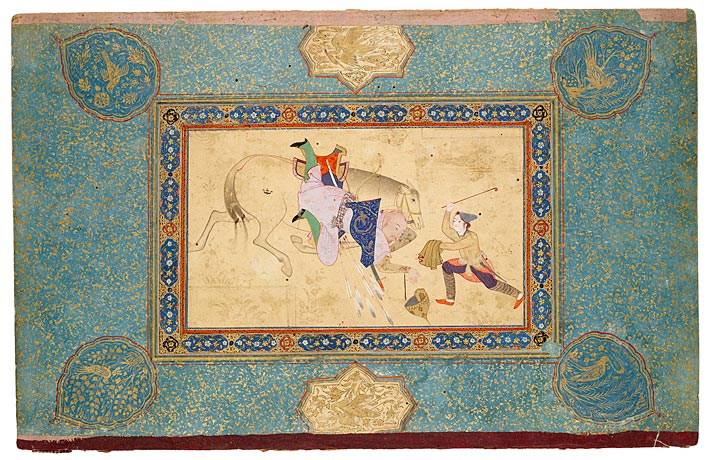
The horse of the heavily armed warrior has stumbled, causing the rider to fall head over heels, dislodging his helmet, knives, arrows, and riding crop. But what is the explanation for the bleeding wound on the top of his head? Has he been struck by his own page? The man has central Asian features, and his horse has slit nostrils and a tail knotted in the Turkman fashion. Men are shown falling off or being pulled from horses in Firdausī's Shāhnāma; perhaps this miniature represents an enlarged detail from such a battle scene. There are some stylistic connections with other miniatures in the Read Persian album, especially those after works by Ḥabīb-Allāh.
The Read Persian Album
Pierpont Morgan's 1911 purchase of two albums (one Persian, one Mughal) from Sir Charles Hercules Read, Keeper of British and Medieval Antiquities at the British Museum, London, proved to be an important turning point in the history of the Morgan Islamic collection. Belle da Costa Greene, Morgan's librarian, accompanied by art historian and collector Bernard Berenson, first saw paintings from the albums at the great exhibition of Islamic art in Munich the previous year. She wrote to Read that they were among the finest works exhibited there and that this important school should be represented in Morgan's collection, asking him to give Morgan the right of first refusal. The Persian album was begun by Husain Khān Shāmlū, governor of Herat (r. 1598–1618), and possibly continued by his son and successor, Hasān Shāmlū (d. 1646). Fifteen of its twenty-seven sheets, once bound accordion style, are presented here. Many of the paintings were made in Herat itself.
